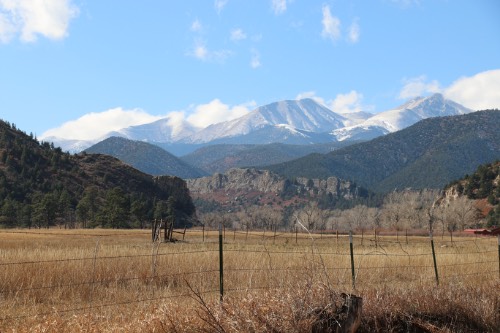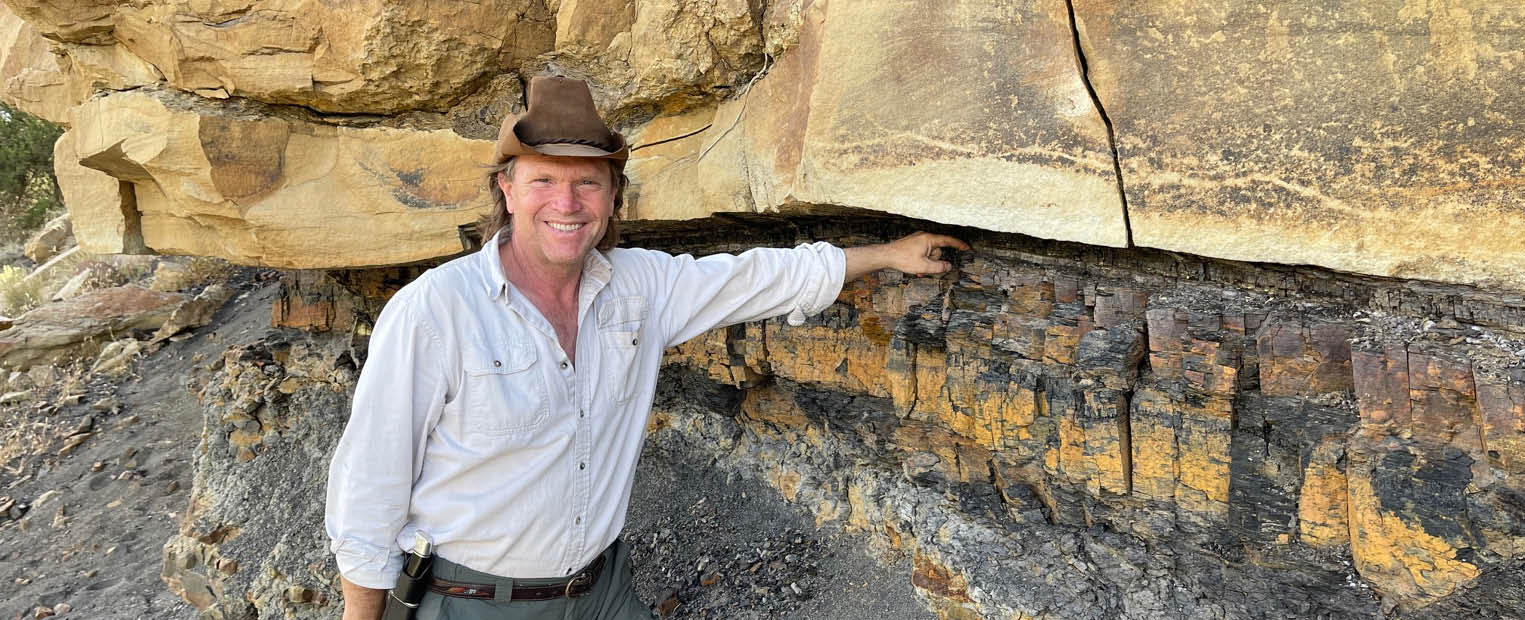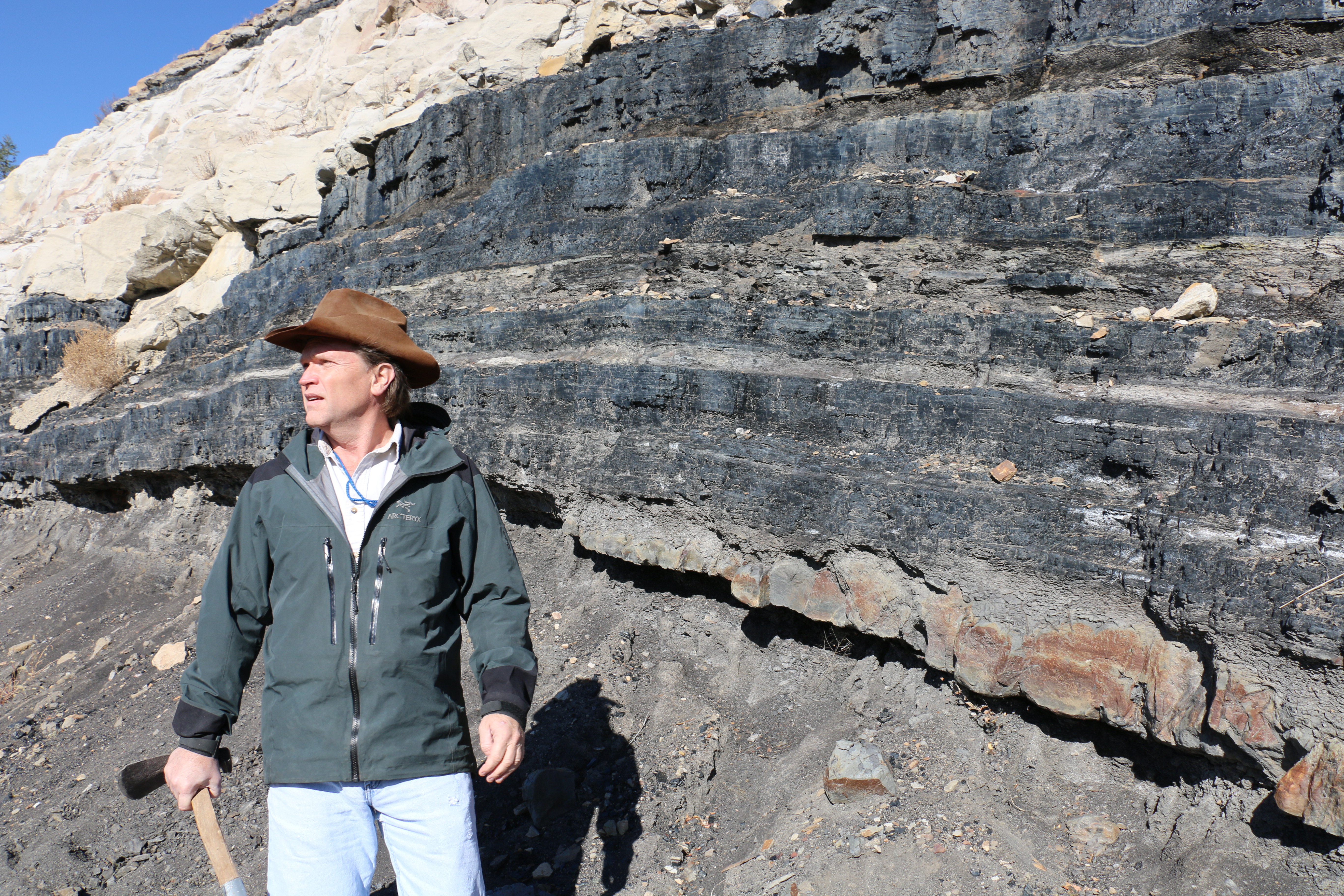"Rocks tell stories,” says John Holbrook, PhD, professor in CSE's Department of Geological Sciences.
Together with his students, Holbrook created the first installation of the video series “Once Upon a Geologic Time.” Their goal is to take viewers on a journey into the long lives of various rock structures around the world. The inaugural video features Holbrook exploring and explaining the rich history of the Raton Basin in New Mexico. Read on as he and graduate student Sam Knox ’25 share about the creation process and watch the Raton Basin video here.
What inspired you to create this video series?
Holbrook: Times change, students change, and the way we teach and reach sometimes needs to change too. My graduate class in Depositional Environments teaches how natural surface systems like rivers and deltas work and teaches how we reconstruct these systems on past Earth surfaces by learning the clues these environments leave behind. Nothing teaches like teaching, and social media is what is reaching. My graduate student Sam and I sat down over some BBQ at the start of the Fall semester and discussed an idea, could we merge these two ideas? Sam and I agreed to try an experiment for his class this round, something new. Sam and I would develop a video field trip to one of the many field-research sites that me and my TCU students have explored. We would make a video explaining the geology of the site that we could share with others interested in the findings of the TCU geology crew. Other professors and students at other schools would be able to trace our steps. In my view, if he could teach it, he understood it, and we could use his work to reach other students. This became our venture, and this became our class project.
Why do you take trips to these locations?
Knox: Geology is a unique science that allows us to venture out into the unknown and make fascinating discoveries about our planet. The qualitative side of geology is not something that is easily explained in the lecture hall. You must see the rocks to understand the patterns.
In my opinion, field work is what makes geology so special. We have the chance to go into nature and see the world in all its natural beauty and we have been assigned a task to understand the patterns of the natural world.
Why did you choose the Raton Basin for your first video?

How do you determine which geological features to discuss?
Knox: We wanted to provide information that a young geologist would be able to grasp. So, we decided that multi-valley complexes, fluvial architecture and sedimentary structures was a good topic to focus on. We also wanted to highlight things you might not see anywhere else outside the Raton Basin. That is why we included the K-T boundary, coke ovens, plant fossils and a discussion on coal beds.
Have there been any surprising geological findings or insights that emerged during the making of the series?
Holbrook: One nice thing about the rocks, every time you visit them, no matter how many times you’ve seen them, they still tell you something new. The size of the antidune structures we found this time in the field showed that the floods that poured into the Raton Basin would have been terrifyingly huge and fast. The thrill seeker in me would want to raft them, in protest of the scholar in me that has better sense.
What goes into the process of creating these videos?
Knox: When conducting research in areas like Raton Basin, the location is key. As a team, Dr. Holbrook and I, along with research conducted by fellow graduate students, have found the best areas possible to gather answers to all our questions. Questions like what was the environment like during a certain time in Earth's history? Was it hot, cold, tropical, or arid? The locations seen in the video are unique because of the geological features on display. Such as the King Coal, K-T extinction, or the multi-valley complex and even trees that are still in place even after millions of years.
In preparation, Dr. Holbrook and I took a trip to Raton to scout out potential filming locations. Talking about the rocks that we see and try to give a simple explanation to why the rocks look the way they do. From there we decide what is important and what is not important.
Several hours of editing work went into the final product. We had around 2 hours of footage that was edited down to only 20 minutes in total. This shows how much can be said about the geological history of the Raton Basin. Sourcing the history was as simple as doing basic research on the town of Trinidad, Colorado. There are little towns dispersed through the area that used to thrive on the coal mining industry. So, research had to be town on each town to figure out the history of the area.
What role do students play in the creation of the series?
Holbrook: It’s all about the students. Without them, the stories would not be told, and no new stories would be written. To keep the series alive, I need the next generation of story tellers.
We would like to keep these coming, and we need your help to make this happen. If
you are interested in geology, or maybe just interested in filmology and like to tell
good stories, come join the fun!
What does this showcase about the College of Science & Engineering’s Geological Sciences Department?
Holbrook: All the work we do in these videos is about work we have done. The Raton video highlights original research by four graduate and three undergraduate students at TCU. I’ve had over 30 master's theses and numerous undergraduate projects doing research on rocks and modern systems in the US and around the world. We have active field projects throughout North America, and in Argentina, Israel, Kazakhstan, Spain, Norway, and Australia. The video project is intended to get the work of my students out to the masses. These videos directly highlight what is going on in geological sciences and the College of Science & Engineering.
How does this series contribute to the broader goals of promoting geological sciences and environmental awareness?
Holbrook: We hope that students watching these can see what a cool science we do. We would like to see more students be a part of what we are doing. We have opportunities to do research in every aspect of geology. We hope the series makes more students ask us about how they can be a part of the science. Moreover, we hope to reach students with the message that Geology is a central part of any future that involves protecting the environment while meeting the resource needs of an emerging and ever technical and energy-hungry world. Our students are the ones finding the lithium and rare earths that make iPhones and electric cars possible. We are the boots on the ground that make most of the green energies practical. We are the people you call to clean up the spills, reclaim and sustain environments, and protect the environment from future calamities. They actually pay us for this! Come join us!
What do you hope people will take away from this series?
Holbrook: I think an appreciation of the past. Rocks tell stories. We reconstruct these stores in geology with detective work using the clues we find. Hopefully our viewers will see not just the rocks, but the clues and the stories when they see the rocks.

